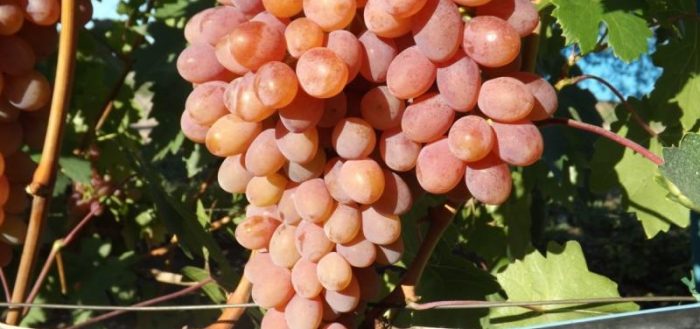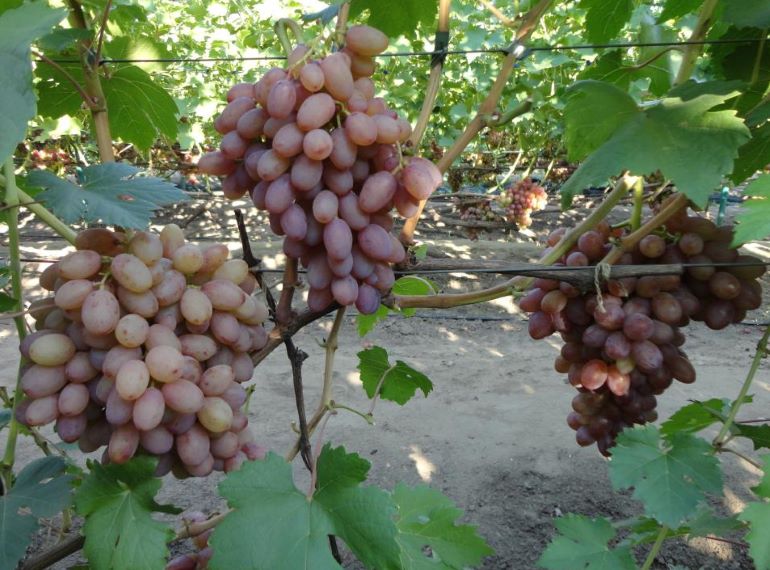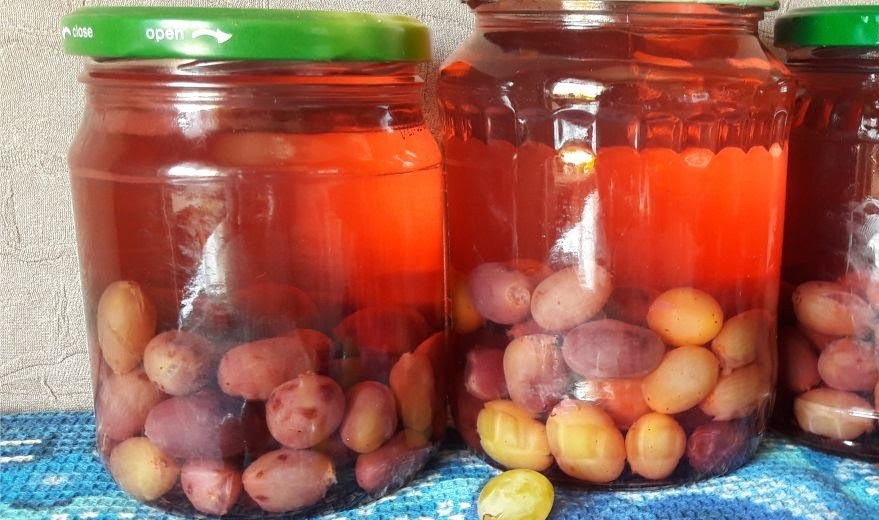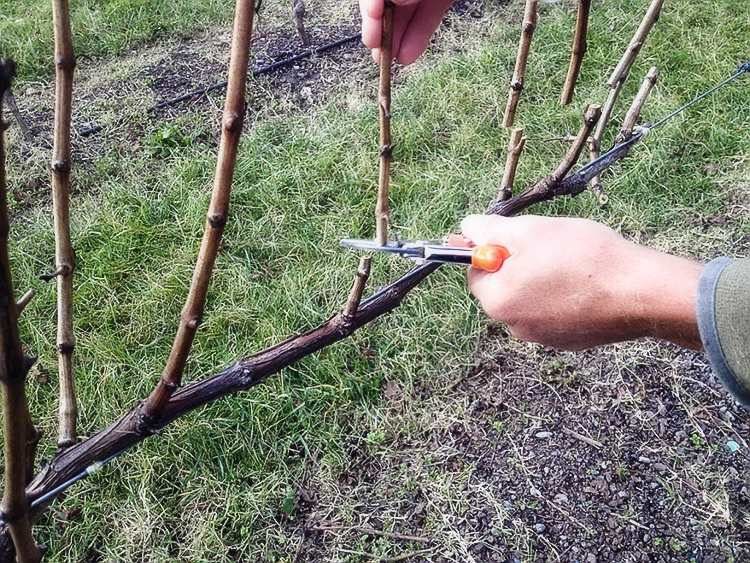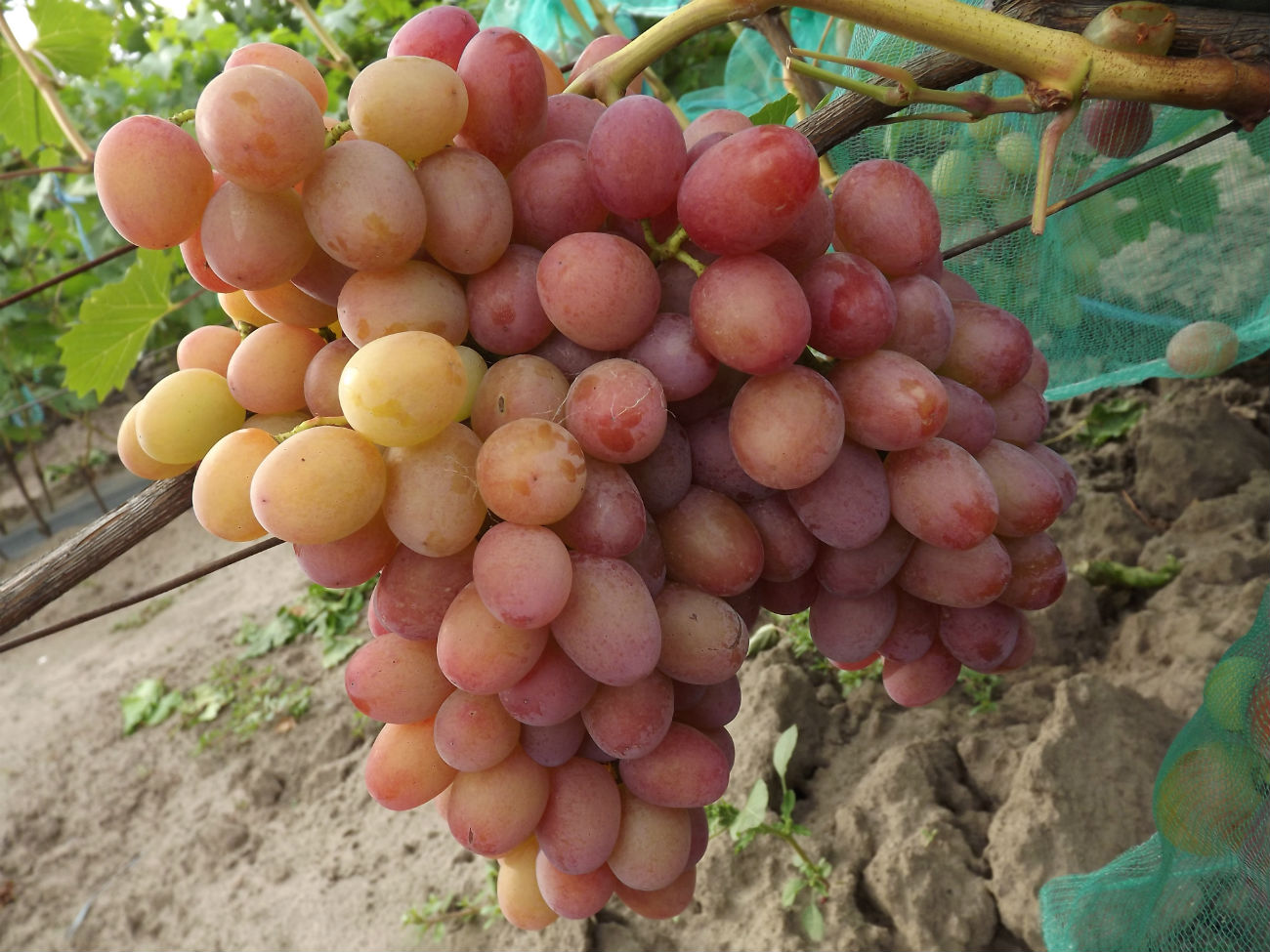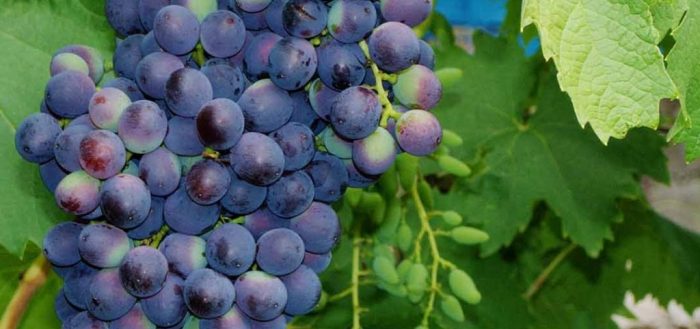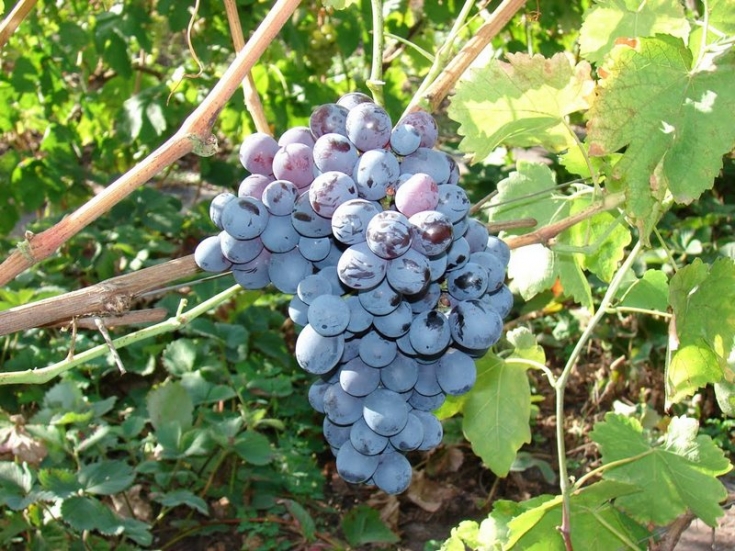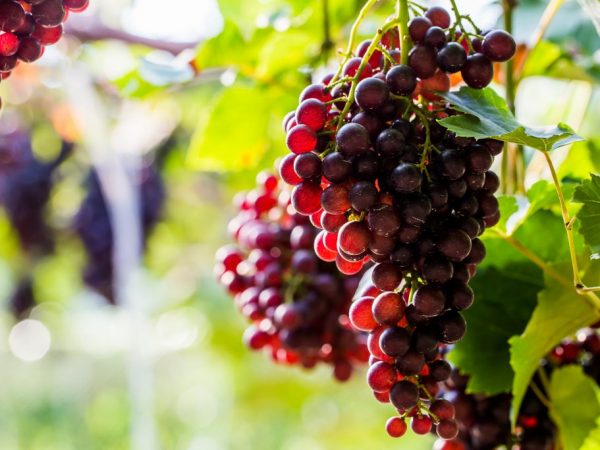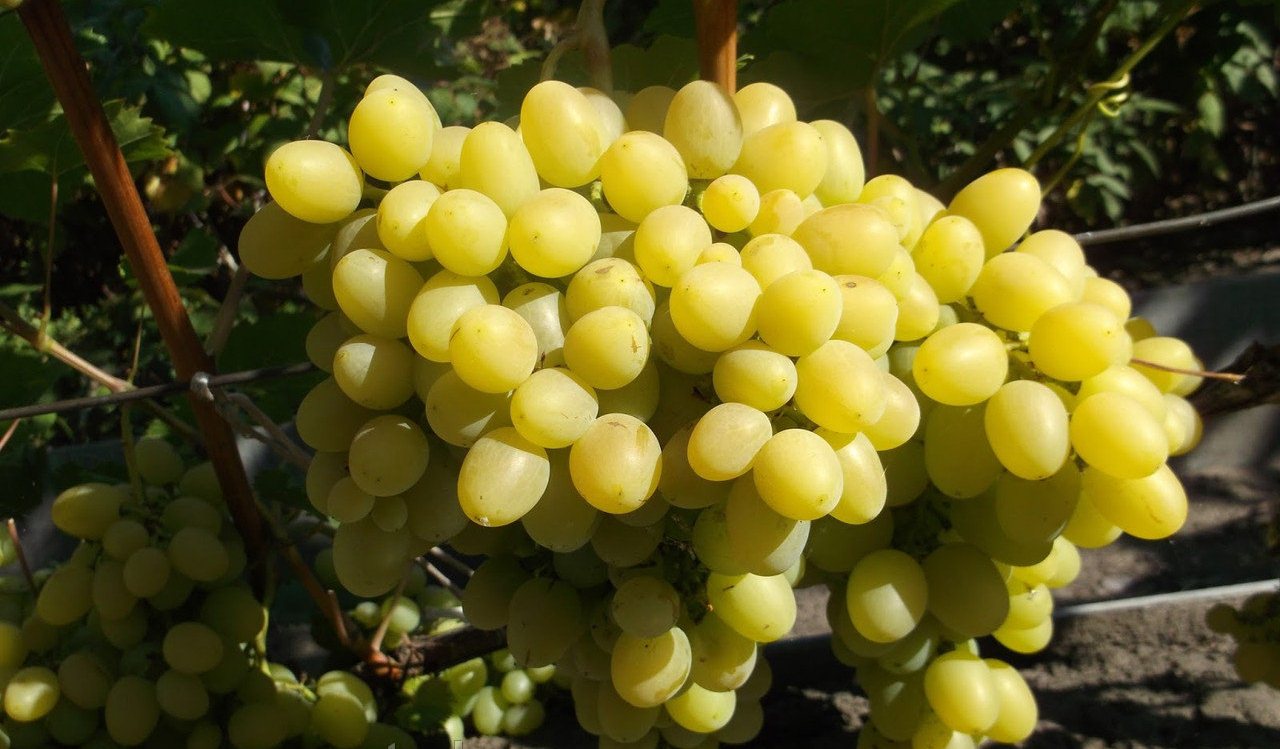Content:
Currently, breeders have created many varieties and hybrids of grapes. And sometimes new varieties are even created by amateur winegrowers who have been breeding grapes for more than a decade.
Viticulture is currently developed not only in the southern regions, as many new varieties have been created that are adapted to growing in colder regions.
Among the variety of grape varieties, it is difficult to immediately choose those varieties that will be grown in a particular summer cottage. And novice gardeners should, before buying seedlings, read the articles that talk about specific hybrids or varieties, their characteristics and main advantages.
One of the young grape hybrids is the Rumba variety. The history of its creation, the main qualities and cultivation techniques will be discussed below.
The history of the creation of the variety
This happened with the hybrid grape variety Rumba, which was bred by amateur winegrower V. U Kapelyushny, who did not use the technologies that specialists usually resort to in breeding the variety. As a result of crossing the varieties Churchill and Rapture red, this hybrid was obtained.
This variety was grown near Rostov, but due to its characteristics it perfectly takes root in the middle zone of our country, in the Moscow region and in more severe climatic conditions. You can meet the Rumba vineyards in Belarus and Ukraine.
Despite the fact that the Rumba grape was created recently, in the early 2000s, its merits have already been appreciated by many gardeners in different regions of our country, where it has been successfully grown for more than one season.
Characteristics and description of grapes
Description of Rumba grapes should begin with the timing of the ripening of the crop - it refers to early ripening hybrids with a ripening period of 3-3.5 months. This table hybrid is distinguished by excellent external qualities, excellent presentation of mature bunches, good taste and ease of caring for the bushes.
Vinograd Rumba is a vigorous upright bushes with powerful shoots. From the moment of planting, the seedlings begin to grow actively, during the season, young shoots ripen by almost 96-98%. The length of the shoots can be 5.5-6 m.
The foliage of this grape is characteristic - it is dissected in the center, the cuts are large, the color of the leaves is rich emerald. Flowers of both types appear on the shoots, so this hybrid does not require additional replanting of pollinating varieties, and itself can serve as a good pollinator for grape varieties with female flowers.
Rumba grapes fruiting begins 2-3 seasons after planting. The cuttings are well compatible with the stock, develop well on it and bear fruit better. They also take root well and quickly in the open field.
The bunches begin to ripen in the first ten days of August, but they can remain on the bushes for a long time, without crumbling and without losing their magnificent presentation.
The shape of the ripening bunches is cylindrical, medium friable. The shape of the berries is oval-oblong, each fruit can weigh up to 10 g. The color of the skin is amber-pink, the aroma is delicate nutmeg. The skin is dense, but hardly felt in food. The pulp is fleshy, sweet. The mass of a ripe brush is 700-850 g, but with good care and proper pruning of vines, there can be more.
The peel of the fruit is not prone to cracking, even during periods of high soil and environmental moisture. Grapes are not damaged by wasps and hornets. Due to the density of the skins, the harvested crop perfectly tolerates transportation over long distances, does not lose its marketability and taste, and can be stored for a long time under appropriate conditions. The yield of grape bushes is high, vines are especially responsive to fertile soil and the introduction of regular fertilizing.
Particularly noteworthy is the resistance of the vineyard to cold - the bushes can withstand cold snaps down to -18 ... -20 ° C, and at lower temperatures they need good shelter.
This type of grape is highly resistant to the main diseases affecting the vines, and is practically not exposed to the invasion of "harmful" insects.
Since the Rumba brushes ripen early, they are usually used fresh, but many growers make a pleasant table wine from the harvested wine.
Agricultural technology of cultivation
The ease of cultivation, good survival rate of seedlings, the absence of complex care are the main qualities that allow even novice winegrowers to plant these grapes.
You can plant this hybrid both with cuttings and seedlings - both options are ideal, because Rumba takes root in both cases. When choosing a seedling, you need to pay attention to its roots - they must be healthy and strong, not have any signs of damage. In this case, the seedling quickly adapts to new growing conditions and begins to actively build up its vegetative mass. The time for planting grapes is spring and early autumn (so that the plant has time to adapt and take root before the onset of frost).
In the fall, you should dig up the selected area, removing all weeds with roots and apply all fertilizers - organic matter and mineral complexes. In the fall, planting pits are prepared. The dimensions of each should be about 0.9 m in diameter and the same depth. A layer of drainage material is laid out on the bottom - fine gravel, small pieces of broken brick. Pipes are drawn into each hole through which young bushes will be watered in the first 3-4 seasons. The next layer is soil with a complex of fertilizers, and the top layer, into which the cuttings are planted, is soil without fertilizers. Shoots of seedlings are cut off before planting, leaving 2-3 buds on each.
Further care for the planted plants consists in regular watering, application of dressings, formative pruning and preventive treatment.
The best top dressing for vines is wood ash, which is applied annually by 2 kg for each plant.
Formative pruning of Rumba grapes is carried out in the same way as for other grape varieties.
Advantages and disadvantages of the variety
A detailed list of the benefits of Rumba grapes is quite large:
- early ripening of the crop - in early August, ripe brushes can be harvested;
- the variety is self-pollinated, flowers of the female and male type appear on it;
- berries - large, sweet;
- beautiful presentation of large cylindrical bunches;
- good taste of the harvested crop;
- high productivity;
- shoots grow quickly and woody;
- high resistance to major diseases and pests;
- are resistant to frost (up to -20 ° С);
- the harvested crop tolerates long-distance transportation without losing its basic qualities.
Gardeners who have grown this variety for more than one season note that it has no obvious drawbacks. But it should be noted that in the middle lane, it is better to cover the grapes with coniferous spruce branches for the winter. And in more severe climates, a coating with special covering materials is required.
